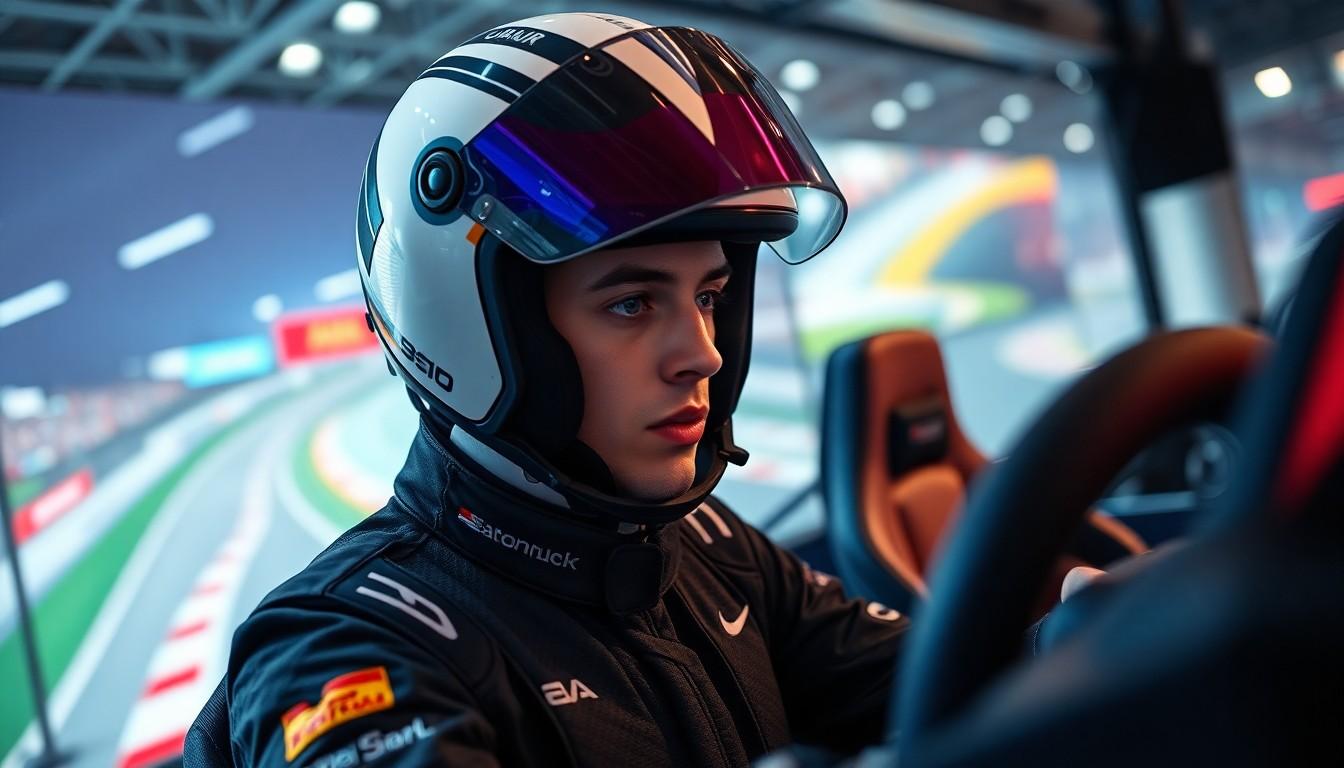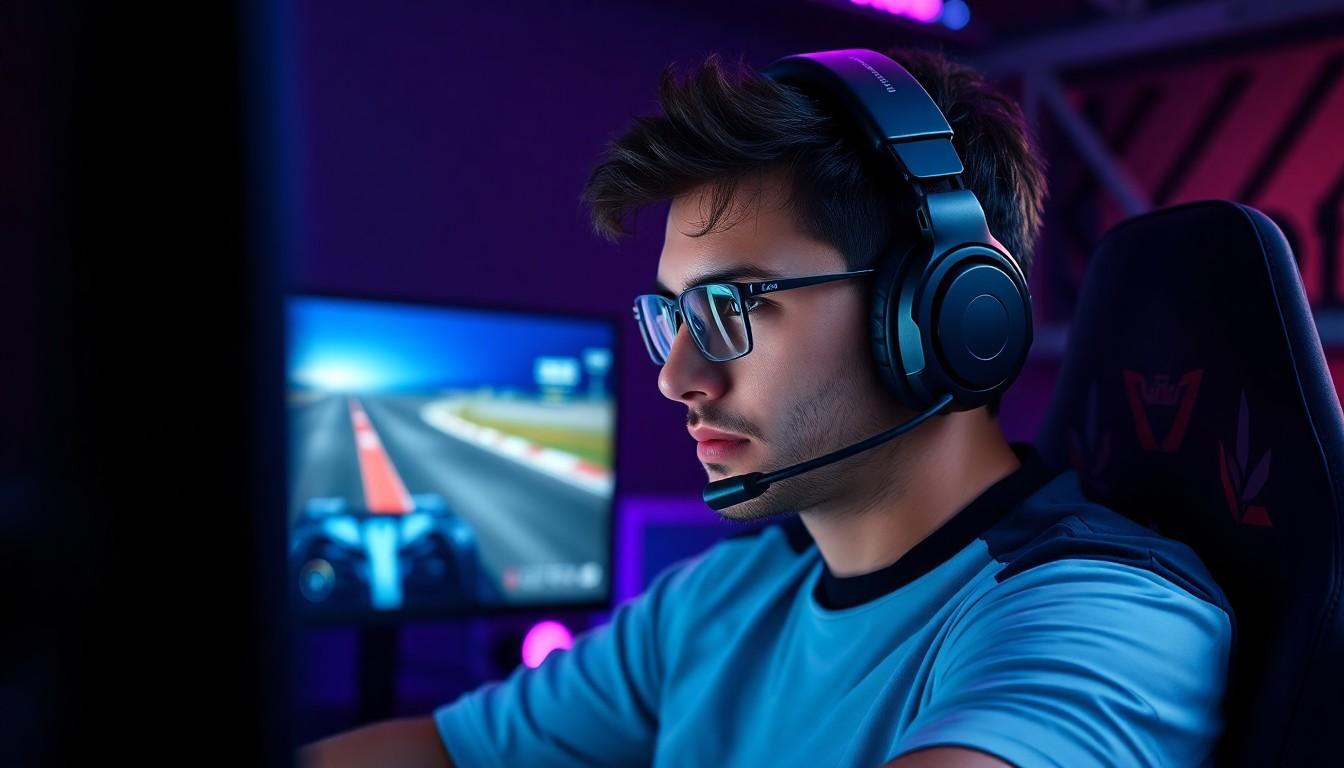In a world where the thrill of racing meets the convenience of your couch, virtual racing has become a phenomenon that’s hard to ignore. Picture this: adrenaline-pumping speed, fierce competition, and no need to change out of your pajamas. It’s not just a game; it’s a race against the clock, and the results can be just as exhilarating as the real thing.
Virtual Racing Results
Virtual racing blends technology and competition, offering an engaging platform for fans and racers alike. Gamers participate in realistic simulations that mimic real-life racing scenarios. Various racing games feature accurate physics, sophisticated graphics, and extensive vehicle customization options. Virtual racing accommodates different skill levels, attracting both seasoned drivers and novices eager to test their abilities.
Players enjoy the ability to race against participants globally, fostering a vibrant online community. Events often feature leaderboards, showcasing top racers and encouraging competition through visible rankings. Many platforms host regular tournaments, elevating excitement and motivation among competitors.
Real-time race analytics provide participants insights into performance, allowing them to refine strategies and improve skills. Some platforms also offer immersive experiences through virtual reality, enhancing the sensation of speed and proximity to competition. In addition, sponsors invest in prominent leagues, further legitimizing virtual racing as a serious sport.
Modern gaming systems support cross-platform racing, enabling users to compete regardless of their chosen device. Popular franchises, such as iRacing and Assetto Corsa, lead the industry, attracting dedicated followers and professional racers. Additionally, enthusiastic fans often engage in viewing live-streamed races, making it a spectator sport.
In recent years, virtual racing has grown exponentially, becoming an integral part of the gaming landscape. Major racing series have embraced virtual formats, integrating them with real-world events to maintain fan engagement. This evolution emphasizes the exciting potential of virtual racing as a key player in motorsport.
Key Players in Virtual Racing
Virtual racing features several significant entities that shape the competitive landscape. Each plays a crucial role in driving interest and engagement.
Major Racing Platforms
iRacing, Assetto Corsa, and Gran Turismo dominate the virtual racing scene. These platforms offer an array of realistic simulations that appeal to both casual gamers and professional racers. iRacing excels in its structured events and extensive licensing agreements with real-life motorsport organizations, fostering a strong competitive environment. Assetto Corsa stands out for its detailed car physics and modding options, enhancing customization for users. Gran Turismo captivates through its engaging gameplay and accessibility on console systems. Competitive leagues often form around these platforms, allowing racers to test their skills against others worldwide.
Notable Teams and Drivers
Several teams and drivers have gained prominence in virtual racing. Red Bull Racing Esports, Team Fordzilla, and BMW Motorsport represent top-tier organizations that field skilled drivers in various events. Individual racers like Enzo Bonito and Joshua Rogers have emerged as stars, consistently securing podium finishes in international competitions. Teams often collaborate with manufacturers to create authentic racing experiences, adding depth to the competition. Recognized for their impressive achievements, these players make significant contributions to the growing legitimacy of virtual racing within the motorsport community.
Analyzing Virtual Racing Results
Examining virtual racing results reveals key insights into performance and strategy. Racers often analyze various performance metrics to enhance their skills and results.
Performance Metrics
Lap times serve as primary indicators of speed and efficiency. Additionally, sector times break down performance into manageable components, allowing for targeted improvements. Track position contributes to race strategies, shaping approaches to overtaking and defending. Furthermore, driver ratings evaluate skills relative to peers, influencing matchmaking in online events. Collectively, these metrics foster a continuous feedback loop, enabling racers to refine their techniques and adapt to challenging scenarios.
Impact of Technology on Results
Technological advancements significantly affect virtual racing outcomes. Innovations in graphics enhance realism, contributing to immersive experiences that influence decision-making during races. Simulation engines drive accurate physics, allowing racers to understand vehicle behavior better, which shapes their strategies over time. Real-time telemetry provides essential data, including tire wear and fuel consumption, guiding race strategies in dynamic conditions. Lastly, the integration of artificial intelligence offers personalized feedback and simulation, helping competitors improve their performance against historical data and predictive algorithms.
Trends in Virtual Racing Results
Virtual racing results reflect significant shifts in technology and community engagement. Data reveals a growing interest in esports within the racing genre.
Growth of Esports in Racing
Esports has seen exponential growth, particularly in racing. Participation rates increase as major events attract more viewers and entrants globally. Statistics indicate millions of fans tune into popular platforms like Twitch and YouTube for live streams. Games such as iRacing and Assetto Corsa host formal competitions, enhancing the professional aspect of virtual racing. Prize pools for tournaments often reach substantial amounts, motivating skilled players to compete. Sponsorship also plays a crucial role in elevating esports events, providing legitimacy and financial backing to players and organizers alike.
Fan Engagement and Participation
Fan engagement flourishes in virtual racing communities. Social media platforms enable direct interaction between fans and racers, fostering a sense of belonging. Live event broadcasts enhance excitement, allowing fans to witness thrilling races in real-time. The accessibility of virtual racing gives fans the chance to participate in community challenges, creating a shared experience. Dedicated websites and forums offer resources, fostering discussion around strategies and results. Additionally, fan-driven initiatives, such as leagues and tournaments, further stimulate involvement and contribute to the growing popularity of virtual racing.
Virtual racing results are more than just numbers; they represent the evolution of motorsport in a digital age. As technology continues to advance, the accuracy and engagement of virtual racing will only improve. This transformation not only enhances the competitive spirit but also solidifies virtual racing’s status within the broader motorsport community.
With a growing audience and increased participation, virtual racing is redefining how fans connect with the sport. The combination of real-time analytics and immersive experiences positions it as a formidable force in entertainment. As players and fans alike embrace this thrilling alternative, the future of virtual racing looks bright and full of potential.


